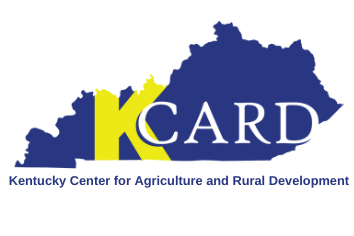Farmers purchase crop insurance to protect their crops from things like natural disasters, diseases, insects and market pricing drops. There are several types of crop insurance: Whole Farm Revenue Protection (WFRP), Multi-Peril Crop Insurance (MPCI), WRFP Micro-Farm Policy, Tree Assistance Program (TAP), and Noninsured Crop Disaster Assistance Program (NAP).
Here are five debunked myths about crop insurance:
It’s all soybeans, wheat, and corn. In many Kentucky counties, Multi-Peril Crop Insurance only covers a few row crops. However, other types of crop insurance covers many different farm products. The Rainfall Index policies can help those in hay production and apiculture, while Whole Farm Revenue Protection can include a variety of farm products, from livestock, nursery plants, vegetables, and fruits, all under one policy.
It’s expensive. When using an Authorized Insurance Provider (AIP) to purchase crop insurance, the federal government will pay up to 85% of your insurance premium, depending on diversity of crops and the amount of coverage you select. A Whole Farm Revenue Protection for less than $50,000 in sales may be as little as $500 a year.
It’s only for “big” farms. Not every insurance agent has experience with small farms, but policies, such as the Rainfall Index and Whole Farm Revenue Protection, start to make sense for farmers at around $50,000 in expected annual sales. You may consider adopting a Noninsured Crop Disaster Assistance Program (NAP) policy below that amount, depending on how dependent your household is on the farm income.
It’s just NAP, and it won’t cover the price I usually get. Whole Farm Revenue Policies are based on your historical revenue, not the FSA price index. Also, NAP has an organic option that can raise the prices you get with those policies. NAP is sold through the Farm Service Agency, while most other policies are through independent insurance agents.
I have to keep perfect records on each crop. New farmers may need to use NAP for the first three years, because some revenue records are required for Whole Farm and MPCI policies. For diversified or smaller farmers with at 5 years of sales and productions records, the Whole Farm Microfarm policy doesn’t require tracking revenue for each crop if you have less than $100,000 in sales and are selling directly to your consumer (not wholesale). For beginning farmers, you only need 3 years of records. This change helps farmers market farmers, who often aren’t tracking income from each crop while selling to individual customers.
If you are wondering what option works for your farm, check out the Kentucky Horticulture Council’s video series or get in touch with KCARD at (859) 550-3972 or kcard@kcard.info! If you want to find an insurance agent to discuss crop insurance, Risk Management Agency has an agent locater tool here: https://www.rma.usda.gov/en/Information-Tools/Agent-Locator-Page.

